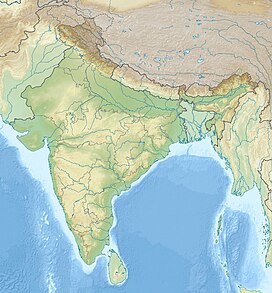The Lushai Hills (Pron: ˌlʊˈʃaɪ, now called Mizo Hills) form a hilly region in the Patkai-Arakan Yoma mountain range system in Northeast India, in the present-day state of Mizoram in India.[1]
| Lushai Hills | |
|---|---|
 Hmuifang mountainside | |
| Highest point | |
| Peak | Phawngpui |
| Elevation | 2,157 m (7,077 ft) |
| Coordinates | 23°10′N 92°50′E / 23.167°N 92.833°E |
| Geography | |
| Location | Mizoram and Tripura, India |
| Parent range | Patkai Range |
This article needs additional citations for verification. (October 2023) |
Geography
editThe highest peak rising to an elevation of 2,157 meters at Phawngpui, also known as 'Blue Mountain'.[2]
Flora and fauna
editThe hills are for the most part covered with dense bamboo jungle and rank undergrowth; but in the eastern portion, owing probably to a smaller rainfall, open grass-covered slopes are found, with groves of oak and pine interspersed with rhododendrons. The Blue Mountain is the highest peak in Lushai hills.[3]
Inhabitants
editThe Lushai Hills, now known as Mizoram, has a long history of hosting various tribal communities. The Mizo people have been the largest and most prominent among them.
In addition to the Mizo community, the Hmar tribe shares cultural ties with the Mizos and resides in the region. The southern areas of the Lushai Hills are inhabited by the Chakma people, while the southernmost part is home to the Mara people.
Another community, the Lai people, lives in specific parts of the Lushai Hills.
Bibliography
edit- T. H. Lewin, Wild Races of N.E. India (1870)
- Lushai Hills Gazetteer (Calcutta, 1906)
References
edit- ^ This article incorporates text from a publication now in the public domain: Chisholm, Hugh, ed. (1911). "Lushai Hills". Encyclopædia Britannica. Vol. 17 (11th ed.). Cambridge University Press. p. 130.
- ^ "Phawngpui". MizoTourism. Archived from the original on 3 March 2013.
- ^ Chisholm 1911, p. 130.
